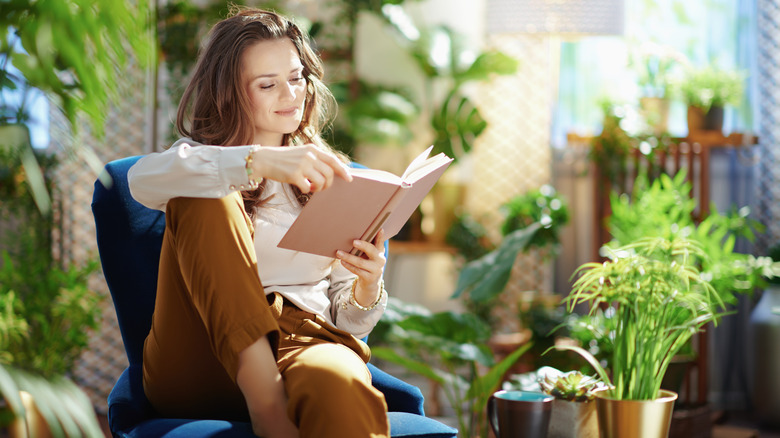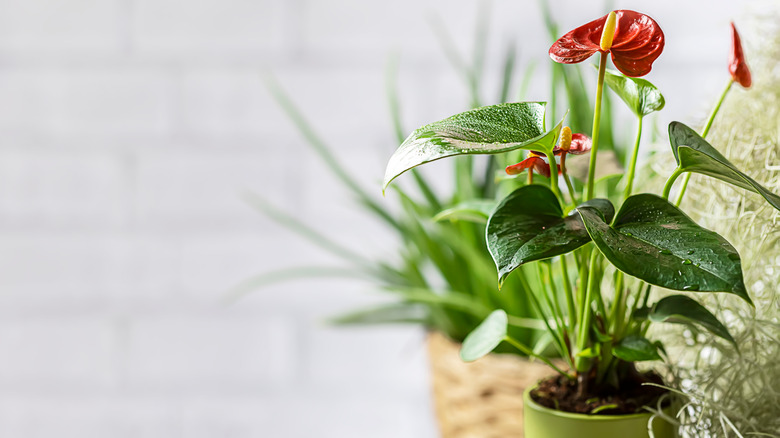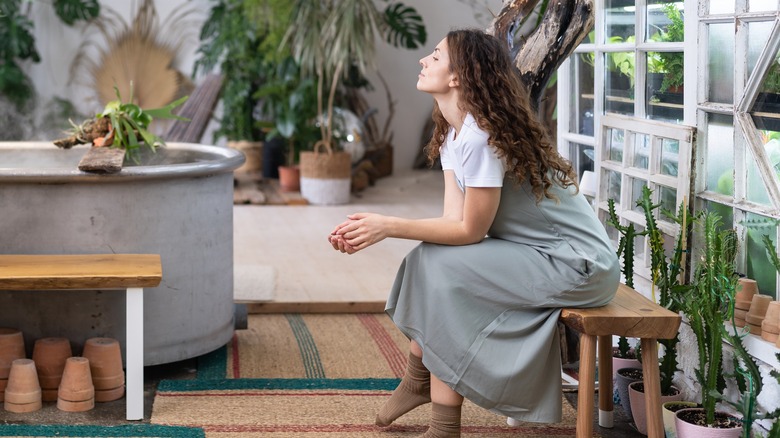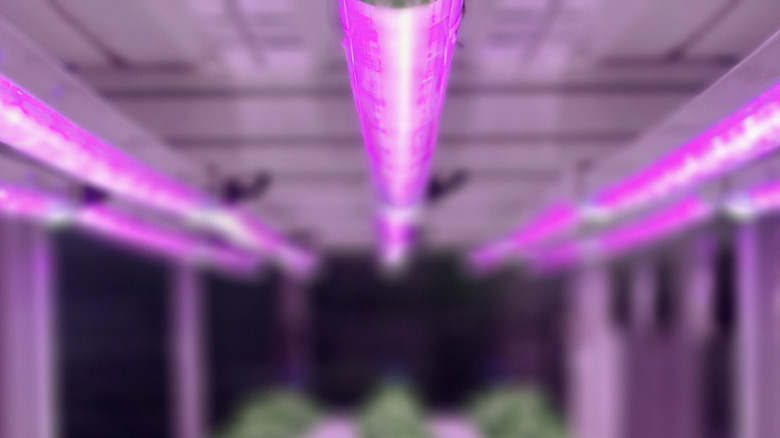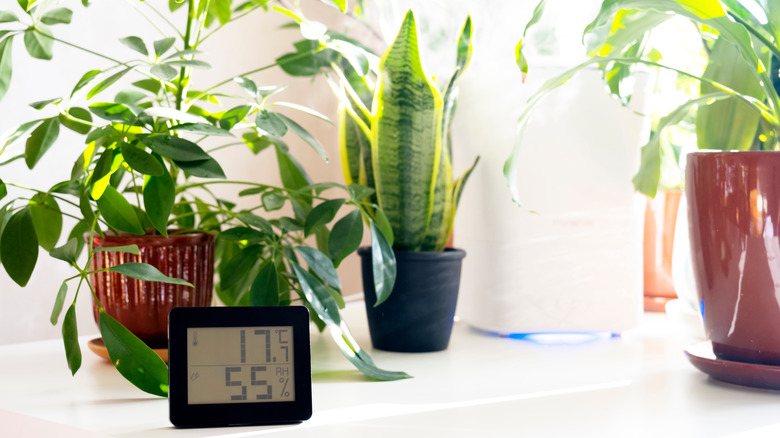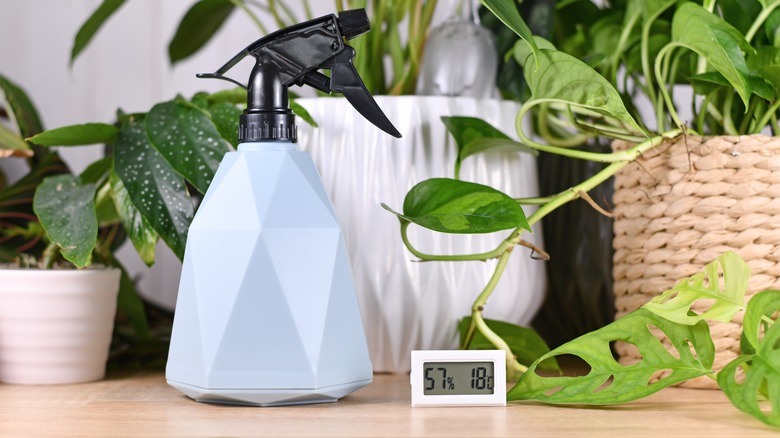How To Create Your Own Indoor Greenhouse For Tropical Plants
We may receive a commission on purchases made from links.
Although collecting houseplants is nothing new, the number of people acquiring a variety of indoor plants has grown considerably in recent years. Harper's Bazaar states millennials are the biggest hobbyists, accounting for almost 85% of those embracing plants for their home environment. And for a good reason! According to Healthline, there is scientific evidence that plants can help you feel more relaxed at home while improving the air you breathe.
If you are ready to expand your collection beyond easy-to-care-for plants like sansevieria and pothos but do not live in a rainforest, you can create the perfect indoor greenhouse that is both beautiful and functional. Adding this setup to your home will allow you to control lighting, temperature, and humidity — everything a tropical plant needs to be happy. Providing these plants with an environment where they can thrive opens up a world of unique and stunning options to add to your collection.
Types of plants
Indoor greenhouses are perfect for plants that have specific needs. For example, The Independent explains specialty aroids like rare monsteras and philodendrons grow best in a space with around 85% humidity, which is uncomfortable for humans but perfect for tropical houseplants. These conditions also support blooming calla lilies, the flamingo flower, and crotons. Orchids survive in the standard home environment but are notorious for their stubbornness to bloom. These gorgeous plants like high humidity and at least 6 hours of sun. With the right greenhouse conditions, they will reward you with gorgeous stems of flowers. Most succulents also appreciate the warmth and humidity of a greenhouse.
You can also grow herbs indoors in a greenhouse. Although they will grow in a south-facing window, mimicking their natural habitat will allow your herbs to develop more quickly and get much larger. Tropical herbs for your indoor greenhouse include cilantro, basil, oregano, ginger, and chives — staples in your kitchen that also make beautiful houseplants.
Selecting the right greenhouse
Indoor greenhouses come in all shapes, sizes, and price points. If you need a greenhouse for a few small plants, terrariums are a beautiful decorative addition to a sunny area of your home, like this tabletop option from Amazon. And if you want to display your collection of beautiful and unusual tropical plants, purchase a display unit with glass doors and shelves. You can get creative with your display if you are into DIY projects. GreenCitizen suggests building your greenhouse. Treated wood is a good option because it is attractive and can be designed and stained to match your space. Steer clear of untreated wood because it does not tolerate humidity well.
You can also convert an existing cabinet into an indoor greenhouse by coating it with a few layers of polyurethane to protect it from moisture and mold and by adding glass or plexiglass doors. If you are on a strict budget but want to keep those precious plants alive, an economical option is a four-tier mini greenhouse with a plastic cover that zips to open. You can find this option at most hardware stores and online.
Add lighting
Good lighting is vital to keeping tropical plants alive in an indoor greenhouse. Many tropical plants like full to partial sun, so supplemental lighting in larger cabinets is necessary. Many grow lights on the market range from basic fluorescent to high-end, full-spectrum lights. According to HappySprout, if you are on a tight budget, T-5 lights are fluorescent bulbs that provide the blue light plants need to grow.
As you shop for indoor greenhouse lighting, you will see high-intensity discharge lights as an option, but these are made for larger greenhouses, not indoors. Because they produce a lot of heat, they cannot be placed too close to growing plants. The heat produced by these lights can also overheat a small enclosed space. The next best option is high-pressure sodium lights that work to promote flowering and can be used in a standard light fixture. The most popular indoor growing option is LED full spectrum lights, which are inexpensive, come in various shapes and sizes, and are energy efficient.
Control the temperature
To keep your tropical plants happy, you will need the ability to control the temperature in your indoor greenhouse. Cielo states the minimum temperature for your conservatory should be around 65 degrees Fahrenheit, and the ideal average temperature is 75 degrees Fahrenheit to mimic cool tropical conditions. These plants do not respond well to significant temperature swings. They dislike being cold, so keep the greenhouse closed when the air conditioning is on, or a nearby door is open to protect them from drafts, keeping the temperature as consistent as possible. If it drops below 65 degrees, open the doors and add some warmth with a space heater.
Greenhouse thermometers are not just for outdoor growing spaces. They often come as a thermometer and hygrometer combo, so you can also use them to track heat and humidity levels in your indoor greenhouse. Analog and digital options are available; some even come with an app to help you check on your plants while away from home.
Manage the humidity
Like temperature, humidity is essential to manage in an indoor greenhouse to keep your plants happy. Lively Root states the typical home has around 30% to 40% humidity while tropical houseplants need at least 50% to grow well, but 60% to 80% is even better, according to Houseplants Expert. If your greenhouse sensor shows low humidity levels, there are a few ways to increase the environmental moisture.
If the humidity is just a little low, use a mister for spritzing the leaves of your plants. A low-maintenance option to help keep the humidity level consistent in your greenhouse is to sit your plants on pebble trays, which are shallow waterproof containers layered with pebbles into which you add water. You can use what you have or purchase a humidity tray set specifically for this purpose. Sometimes the humidity can get too high if your room is warm, so if that level starts creeping up to 80%, open the doors and provide some ventilation to prevent fungal issues.
